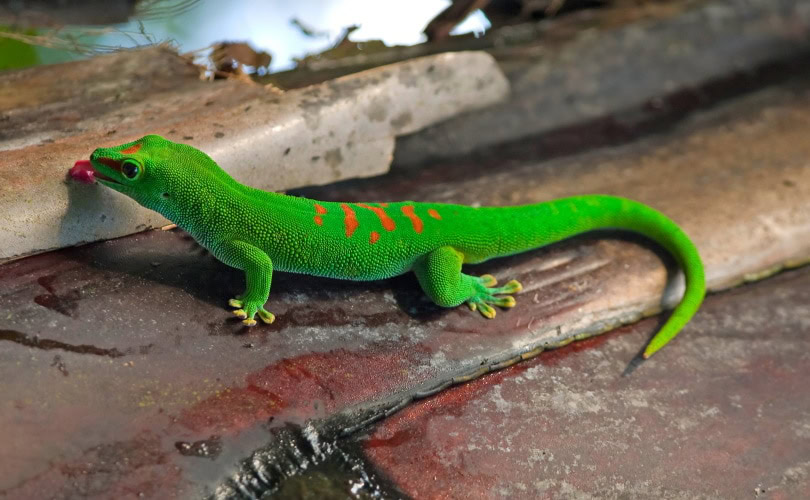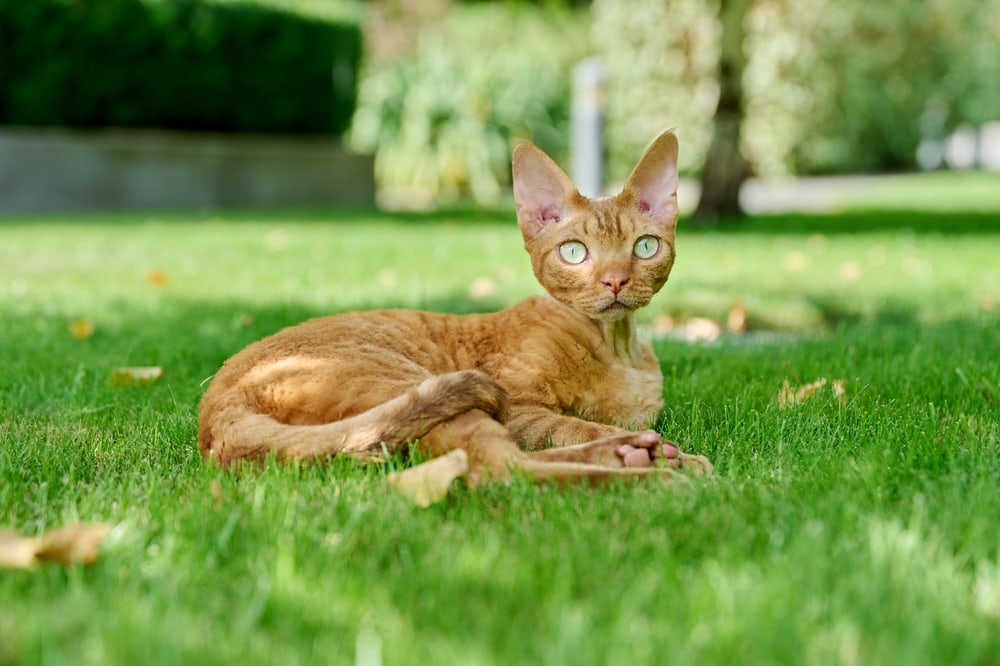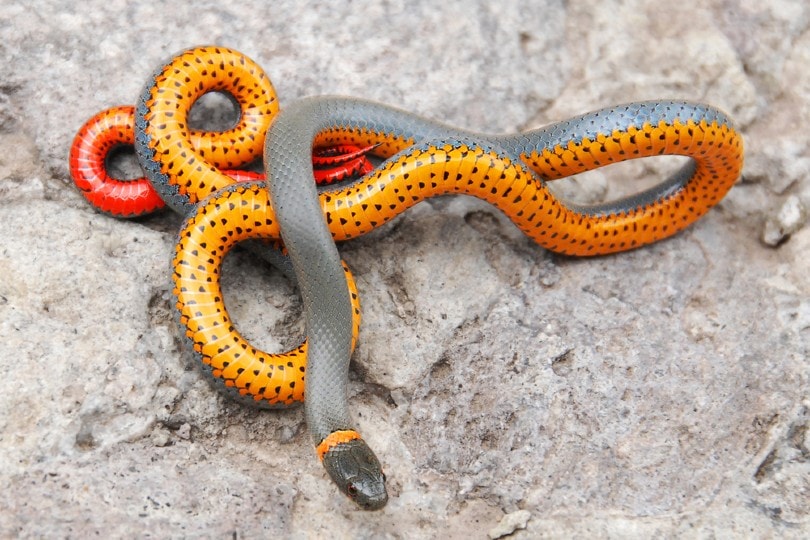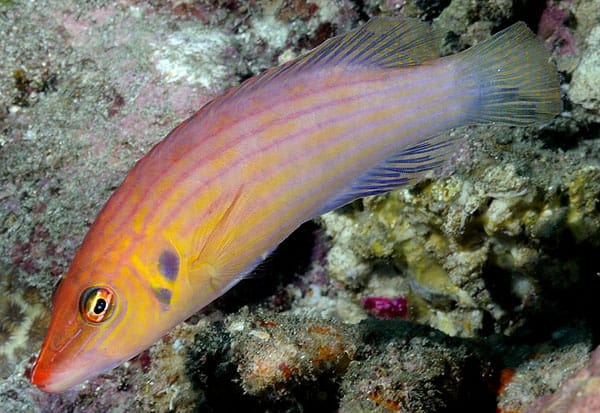Click to Skip Ahead
Day geckos are part of a genus (Phelsuma) that includes about 70 species of small lizards that vary quite a bit in appearance and behavior. Some are native to areas in the Indian Ocean, and others are native to a specific island. That’s one reason that there are so many types, as they all developed independently on separate islands.
These geckos are long-lived but extremely high-maintenance, so they are not suitable for new owners. The Giant Day Gecko is part of this group and is often considered one of the most beautiful geckos, which may be one reason that they are so popular. Their crimson and green coloration is quite unique in the reptile world.
Giant Day Geckos are native specifically to northern Madagascar and a few nearby islets. They commonly hang out near people in gardens and plantations. They have evolved to thrive in tropical rainforests’ hot and humid climate, and these conditions must be recreated in captivity.
Quick Facts About Giant Day Geckos
| Species Name: | Phelsuma grandis |
| Family: | Gekkonidae |
| Care Level: | High |
| Temperature: | 75°F to 80°F |
| Temperament: | Active |
| Color Form: | Green-blue with red stripes |
| Lifespan: | 15 years |
| Size: | 12″ |
| Diet: | Varied |
| Minimum Tank Size: | 18 x 18 x 24 |
| Tank Set-Up: | Climbing areas, moisture-rich substrate |
| Compatibility: | None |
Giant Day Gecko Overview
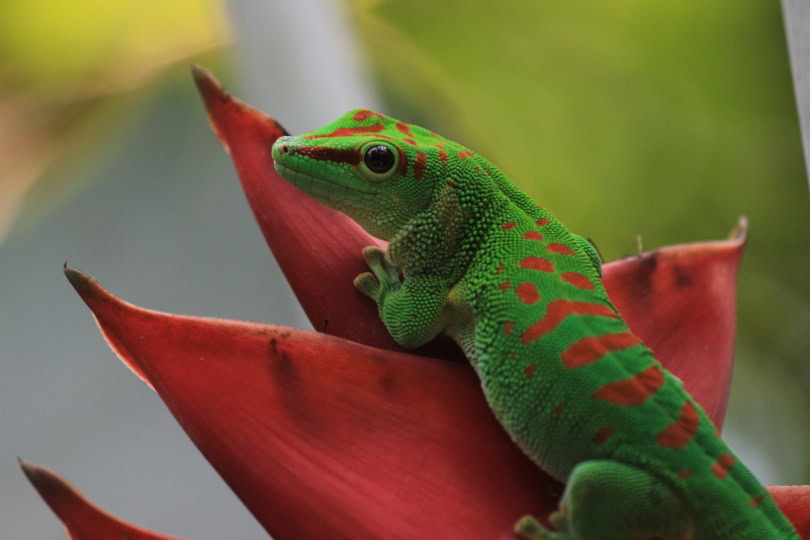
Due to their size, this species is called the Giant Day Gecko or the Madagascar Giant Day Gecko. They belong to the relatively large Phelsuma genus, which includes over 70 different gecko species, making it one of the largest reptile groups in the world.
These geckos were originally only found in their native Madagascar. However, they have since been introduced to other tropical and subtropical regions. They now exist as an invasive species outside of their normal range. They are civilization-following lizards, which means they are often found around human dwellings. They have adapted well to human incursion in their range, which is one reason that the IUCN lists them as Least Concerned.1
They eat a range of food in the wild, including invertebrates, small vertebrates, and nectars. If they can fit something into their mouth, they will often eat it. Their relatively lenient diet makes them ideal exotic pets.
How Much Do Giant Day Geckos Cost?
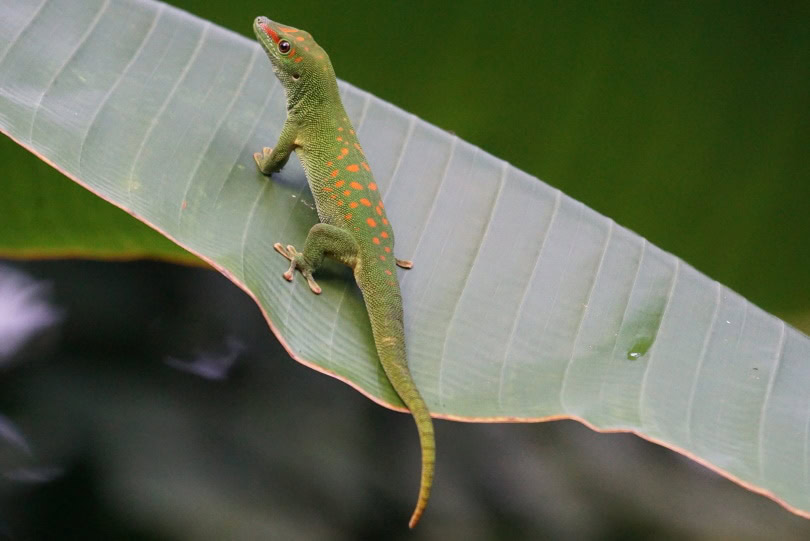
Like most geckos, the Giant Day Gecko is relatively inexpensive. You can usually find one easily for around $70. Most places that sell lizards will have this species occasionally. Furthermore, many online stores also sell these geckos.
Your best option is to find a breeder near you. Breeders often take better care of their pets than pet stores, mainly because they are more knowledgeable about the animals. For this reason, their pets tend to be healthier and tamer than if purchased directly from a breeder.
Furthermore, if you purchase from a breeder, you will have a better idea of how the lizard was raised. Ask about the living conditions that the animal grew up in and where the parents are currently located. If they appear healthy and robust, the breeder likely knows how to take care of geckos, and the babies will be high-quality.
You can also ask the breeder for advice on how to take care of your new pet. They’ll be able to inform you about specific food requirements and habitat requirements that your lizard may prefer.
Typical Behavior & Temperament
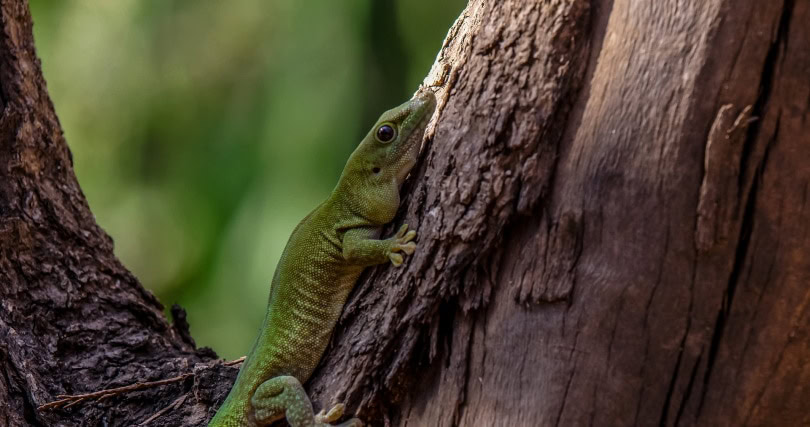
Unlike many lizards, the Giant Day Gecko is active during the day. That is one reason for their name. Despite being larger than most other geckos, these are still quite fragile compared to other lizards. They should not be handled extensively, as they can potentially fall and become injured. Their skin also isn’t suited for regular handling and is quite delicate. It can be injured and irritated by human hands.
When scared, these lizards will drop their tails. This is a defensive mechanism that is meant to distract predators. The idea is that the predators will see the wiggling tail and go after it instead of the lizard. Their tails do regenerate after some time, but usually not to the full extent. This gecko will always look just a bit weird after dropping their tail.
They may also bite if they feel threatened, though they are much more likely to run. Typically, biting only occurs if they are unable to run, such as if you’re holding them between two hands. They are large enough to break the skin.
Males can be territorial toward other males, so they should be kept apart. However, even female and male-female pairs can become violent and will often need to be kept in separate habitats.
Like many lizards, the Giant Day Gecko is good at climbing. They have tiny filaments on their toes that enable them to stick to almost any surface. They can easily climb up the glass on their container and even on the ceiling. They tend to be escape artists for this reason.
Appearance & Varieties
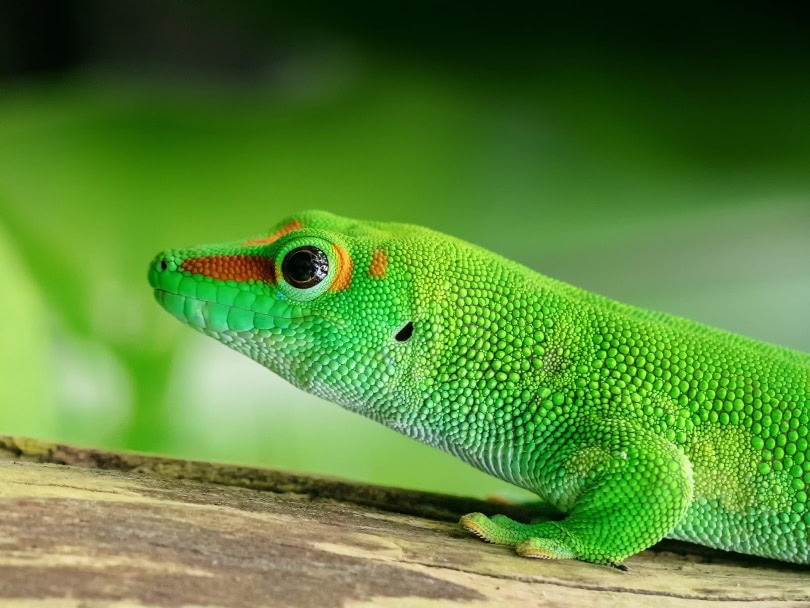
These geckos are well-known for their green-blue coloration and crimson lines. They are one of the showier breeds of gecko, which is also why they are so popular. Their colors tend to be bright. Stressed individuals will be a more muted, dark green, though. Watching your lizard’s color changes is a good indicator of how they are feeling.
While these geckos are huge compared to other Day Geckos, they are still relatively small lizards. They must be handled delicately despite their “giant” status.
 How to Take Care of a Giant Day Gecko
How to Take Care of a Giant Day Gecko
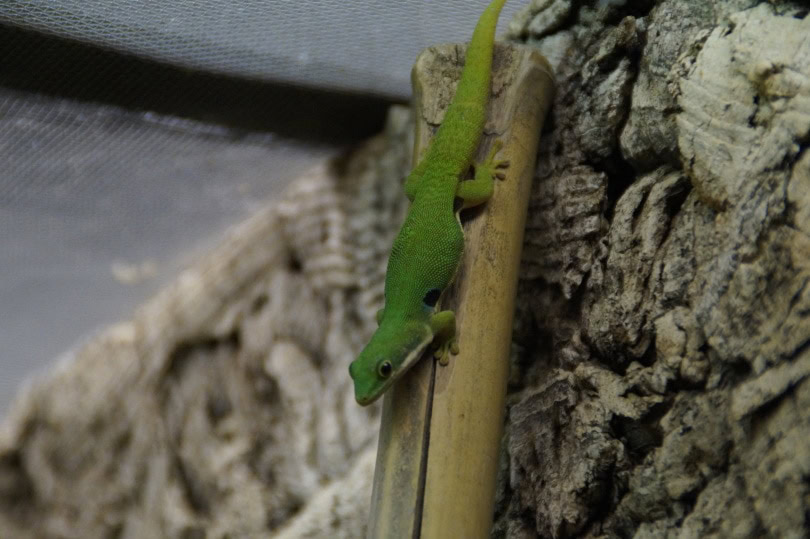
Habitat, Tank Conditions & Setup
Due to their larger-than-average size, these geckos require a bit more space than other Day Geckos. An 18-x-18-x-24 enclosure is often the best option for a single gecko or an adult pair. However, be aware that some adults may need more room than this to get along with others. Therefore, you may want to plan on a larger container if you are keeping more than one.
Males should never be kept together, as they are territorial. It will always result in fighting and injuries to one of the geckos.
Live Plants
Maintaining live plants within the enclosure is highly recommended, as these provide something for the lizards to climb on and improve the moisture content of their enclosure. Of course, the plants should be safe for the lizard and have large enough stems for them to climb on. Due to their large size, they will trample weaker plants, so ensure that your plant choices are large and hardy enough to survive your lizard’s attention.
Substrate
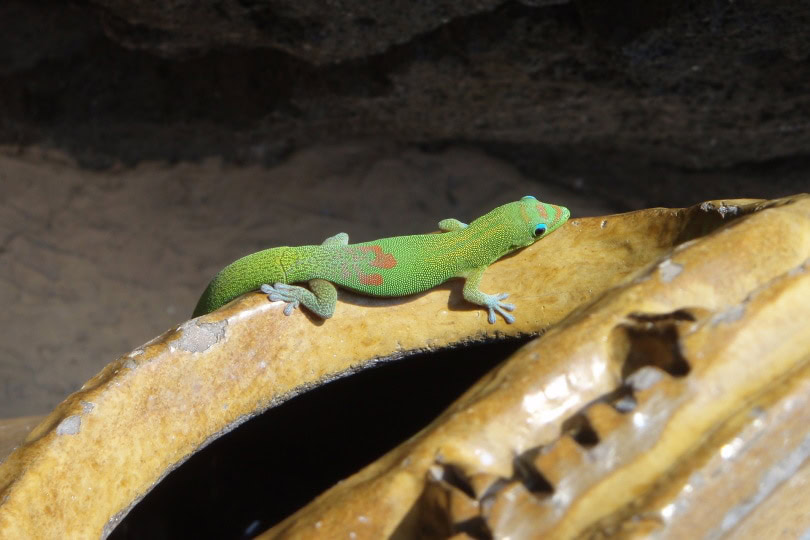
Their substrate is essential, as it keeps the humidity high enough within the enclosure. There are lots of potentially significant substrates you should use. Preferably, it should be some soil mix that can handle plants too, so you can plant live plants directly into the habitat. Alternatively, you can keep plants in their little pots inside the substrate, but it is often easier to use lizard-safe soil that will hold plenty of moisture.
Climbing Spots
You should ensure that there are plenty of climbing spaces for the lizard. These include pieces of bark, large sticks, plants, and branches of all sorts. This species does a lot of climbing in the wild, so they must be provided with opportunities in captivity. Be sure that the options that you choose are strong enough to hold up your lizard, as they can get large as an adult. You may have to do some searching before you find things capable of supporting your pet safely.
Temperature
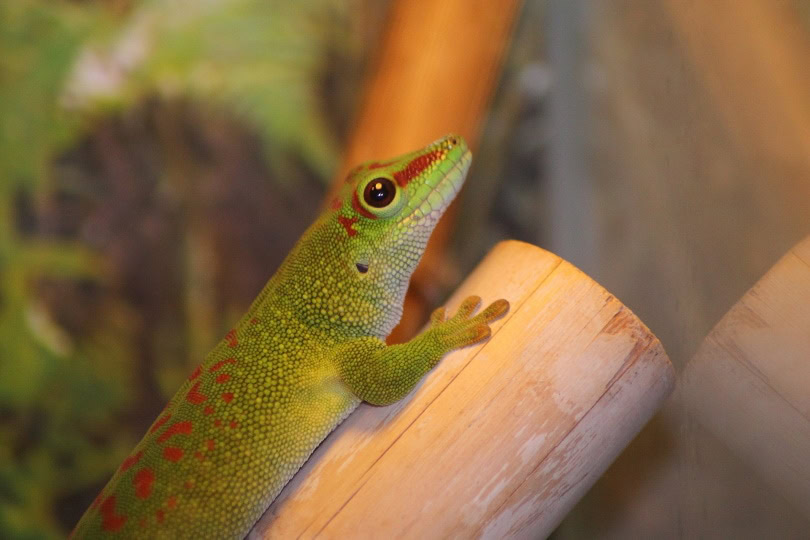
These geckos come from a typical area. Their average temperature range should be around 75°F to 80°F. A basking area should be provided a bit warmer, at 85 to 90°F. You can use a halogen light to create this basking area. Be sure to include a UVB bulb. UVB is essential for lizards, but they often can’t get it in captivity, as this light comes naturally from the sun but does not make it through window glass. Therefore, unless your lizard is kept outside, they won’t be receiving UVB light.
Fortunately, you can buy small bulbs that can be added to a basking light to meet this need.
Humidity
The humidity requirement for this species is relatively high. It should remain at 60% to 70%, which is much higher than in most homes. Daily misting is often required to maintain this high humidity and keep the substrate moist. The gecko will also drink the water droplets from the misting, which is how they naturally get water in the wild. There should be plenty of ventilation in the habitat, though. Droplets should not stick around for longer than 24 hours.
A water dish can be supplied as long as it is shallow. However, if you mist the enclosure daily, it will not be necessary. You will need a hygrometer to measure the humidity of the enclosure.
Do Giant Day Geckos Get Along With Other Pets?
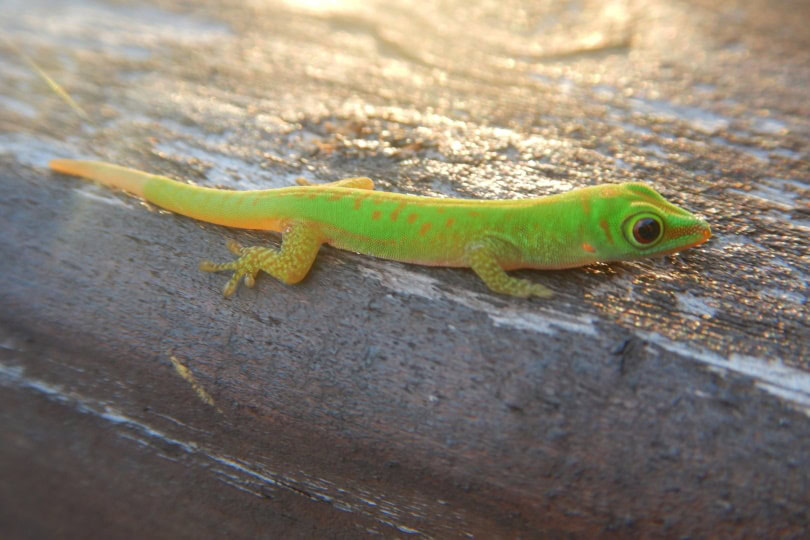
Most of the time, you’ll want to keep your Giant Day Geckos housed alone. They will eat any animal that is smaller than them, which includes most frogs and other geckos. They are only suitable with species that are about the same size, though they may still fight quite a bit.
Furthermore, Giant Day Geckos require a lot of space. They will use every inch of their enclosure every day, as they are an active species. Adding in more animals can easily cause overcrowding and other issues. While these lizards may look a bit too small for the size tank that we recommend, their high activity level makes the larger space required.
What to Feed Your Giant Day Gecko
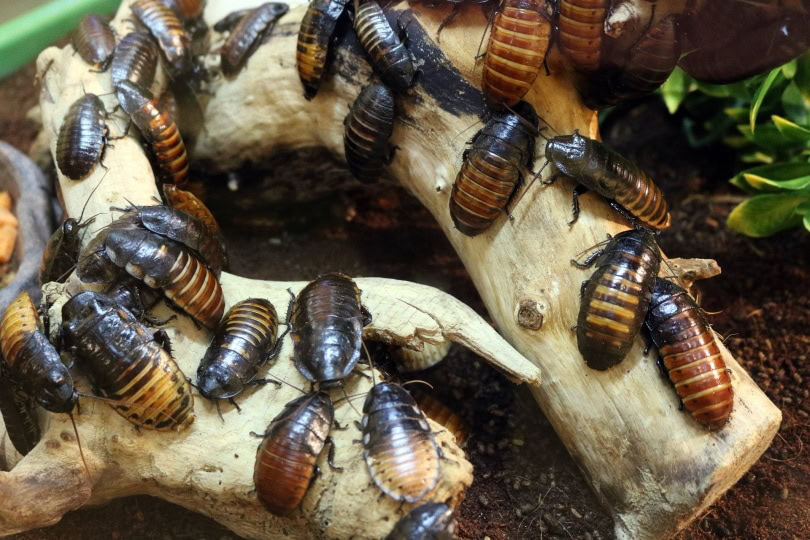
Giant Day Geckos have a varied diet. In the wild, they eat just about anything they find. Their diet in captivity can be similar. They can eat roaches, silkworms, waxworms, and butterworms, along with a variety of tropical fruits. Anything small enough to fit in their mouth and not be a choking hazard will be suitable.
Most of the time, the geckos will need to eat about twice a week, eating three to five insects during those times. Breeding females and juveniles will need food about five to seven times a week, as they are using up quite a bit of energy and still growing, respectively. Morning is the best time for feedings, as the lizards are most active during these periods.
You should gut-load insects before feeding them to your gecko to improve their diet and nutrition. Whatever the insects eat, your lizard will eat. You should also use a calcium powder to dust the insects before feeding them to your gecko, as they often do not get enough calcium when in captivity.
Alternatively, you can feed them a commercial diet that is nutritionally balanced. There are quite a few options for opportunistic lizards. However, live insects are still recommended.
Keeping Your Giant Day Gecko Healthy
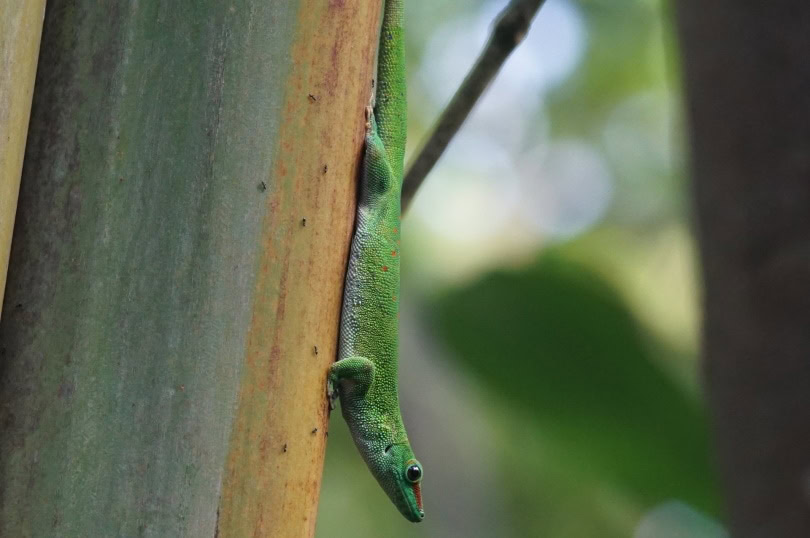
These lizards are usually healthy when taken care of correctly. Otherwise, they can develop a variety of problems. For instance, if there is improper humidity in their habitat or unsanitary conditions, they may not shed their skin correctly. Like all lizards, they shed their skin as they grow to remain healthy.
If their skin does not come off appropriately, it can cut off circulation to the constricted body part. Many geckos can lose fingers and toes in this manner. It is essential to keep the humidity perfect when they’re shedding and to keep an eye on your pet to ensure that all their skin comes off properly.
Parasitic infections are also common if geckos are fed infested foods. Weight loss, vomiting, and skin disorders can all be indicators of parasites. More often than not, though, these infections go unnoticed and are mainly free of signs. If you do take your pet to the vet, antiparasitic medication is often required.
Metabolic bone disease can occur if these geckos do not consume enough vitamin D and calcium. UVB is necessary for the lizard to produce vitamin D, and calcium must often be supplemented. You can use a powder or gut-load the insects with a particular formulation that is high in calcium. Without these two vitamins, your lizard’s bones will become weak. This can cause deformities if they are growing, along with brittle bones.
Breeding
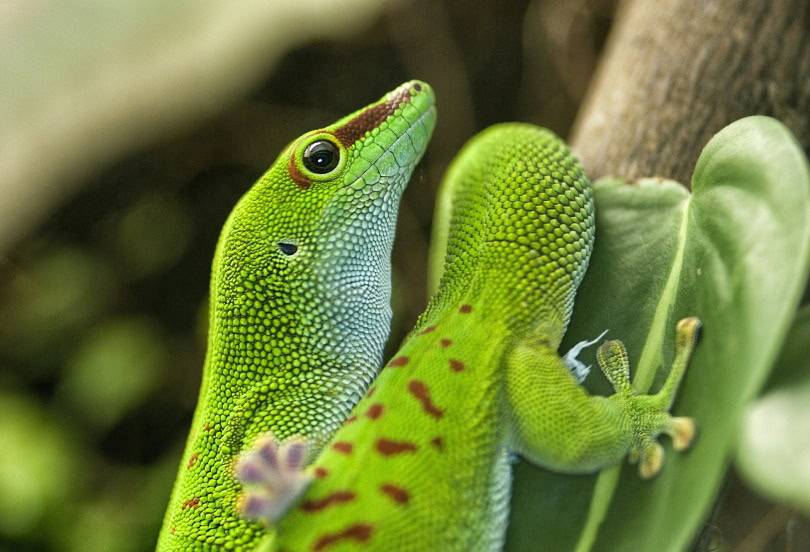
It is common for male-female pairs to be kept together in an enclosure, as they often have the highest chance of getting along. However, this often results in mating, so it is essential to keep this in mind when deciding to house two Giant Day Geckos together. If the proper tank conditions are maintained, these lizards will often breed and lay eggs regularly.
Keeping small lizards is precisely the same as taking care of giant lizards, except that everything is smaller. You’ll need to use smaller branches and food items. Many people utilize tiny plastic containers to house hatchlings. Of course, these should be kept separately to prevent fighting and injuries. Small crickets are often an excellent food source after your lizard’s first shed.
Typically, females lay eggs about twice every breeding season. They usually breed from December to June, though this can shift slightly when in captivity.
Are Giant Day Geckos Suitable for You?
Due to their specific habitat requirements and delicate nature, we only recommend these lizards for experienced owners. Their diet is easy to figure out, but everything else requires a bit more work. Experience is often necessary for getting the tank’s temperature and humidity correct. These lizards will not thrive while beginners figure out how to control these parameters. They also must be handled carefully. It is easy to injure them accidentally.
In general, these geckos need a large tank. They are active and need room to roam. You’ll probably end up with a bigger tank than you think you need—until you see just how active these little lizards are. For this reason, we recommend planning for more room than you’d imagine a gecko needs.
These geckos require a bit more regular care than other exotic pets. They need to be fed gut-loaded insects multiple times a week, and their tank needs to be misted every day. You’ll also have to spot-clean their tank regularly and potentially take care of live plants inside their habitat. All this adds up to quite a bit of work.
Related Reads:
Featured Image Credit: Evgeny Murtola, Shutterstock
